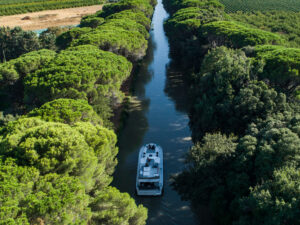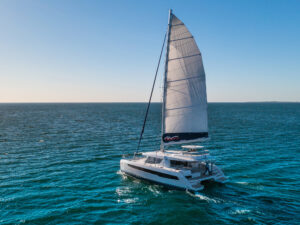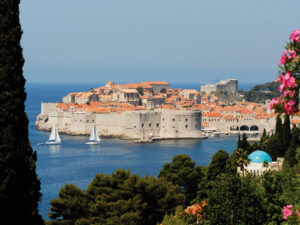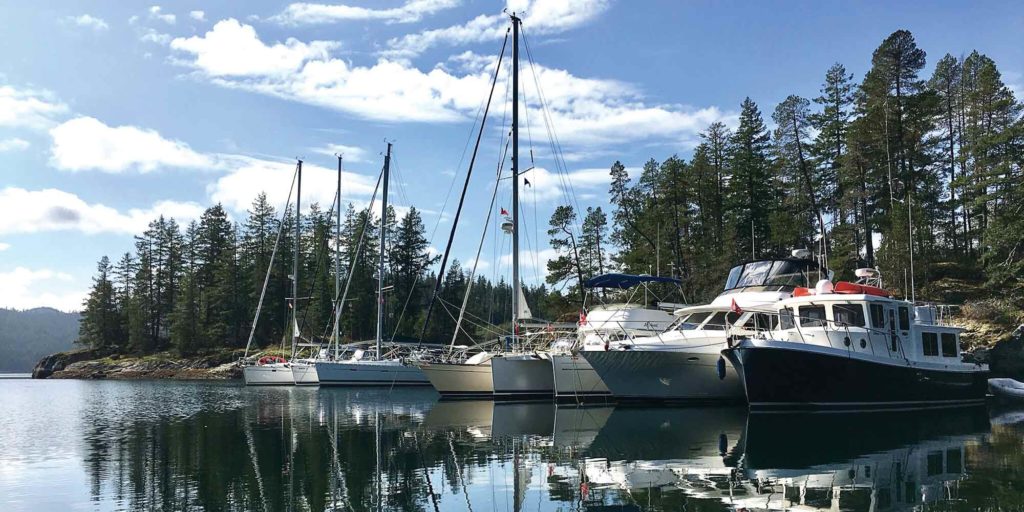
Effortless broad reaching, a dip in refreshing waters, cocktails in the cockpit, reunions with family and friends, a chance to learn a new onboard skill — those are the reasons vacation sailors say they return year after year to their bareboat company of choice.
But why do the owners and operators of these companies do it? Aside from the obvious reason — it’s a way to earn a living — running a charter company isn’t magic. It’s work. Or, “a labor of love,” as one put it.
A roundup of a dozen successful small bareboat charter companies, some of them family-owned and in business for decades, reveals why they got in and how they stay in the game. Companies also explain how their approach helps them shape and prioritize their business goals, and what the challenges are, as well as the opportunities — from operating in the virtual sphere of digital technology to minding the fleet in the flesh by walking the docks and sending sailors out in divergent, if gorgeous, cruising grounds.
Origins/Motives/Genesis
Fresh from careers in hotel management and banking, Cindy Chestnut and Brian Gandey knew what they sought when they started Conch Charters at Fort Burt Marina on the island of Tortola, in the British Virgin Islands, in 1987.
“We always wanted to be a small company,” Chestnut says. “And it was also a conscious choice to locate Conch Charters at a sailor’s marina rather than a fancy marina. We went for a location that allowed us to pass the savings on to our customers. And our customers seem to appreciate that more than having a swimming pool.”
What Gandey and Chestnut carried out, parlaying skills learned in one industry to do well in another, also worked for others.
Merion and Jennifer Martin run a mixed fleet of 25 power- and sailboats at Desolation Sound Yacht Charters in Comox, British Columbia, Canada. “Having worked in the superyacht industry in Europe and the Caribbean charter circuit for years has given us the experience to know what people expect and how to exceed their expectations,” Jennifer says.
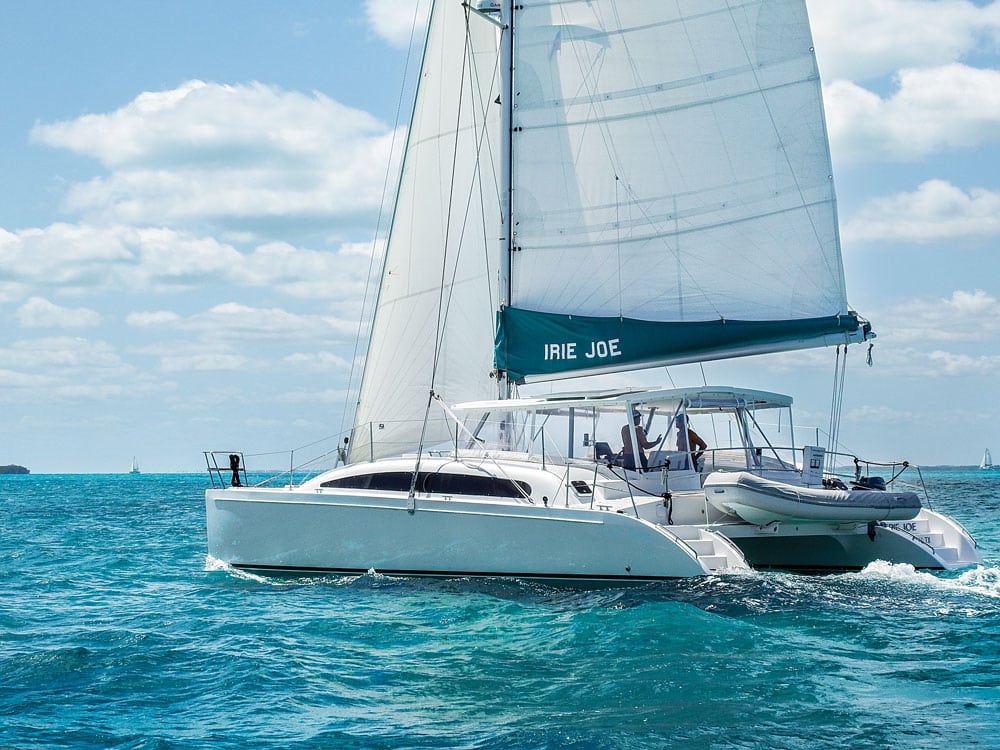
Dave Conrad, of Great Lakes Sailing Co. in Traverse City, Michigan, says he and his wife, Kristen, met while he was managing a charter base in the Caribbean. Together, the couple worked aboard crewed yachts before buying the Traverse City 20-strong fleet of sail- and powerboats.
“Our success is a direct result of our hands-on approach to running the company,” Conrad says. “In the early days, we had little to no staff. We commissioned over 20 boats every year. We painted every bottom, did all the rigging, repairs and maintenance, and answered every phone call ourselves. We worked boat shows together even when Kristen was eight months pregnant.”
Some sailors got into the business so they could immerse themselves in a beloved pastime. “We started 40 years ago with one boat, as a way to help pay for it,” says Roger Van Dyken, of San Juan Sailing in Bellingham, Washington. “It turned into a hobby, then a pleasurable activity, and then, when we formed the business, it became an enjoyable enterprise.”
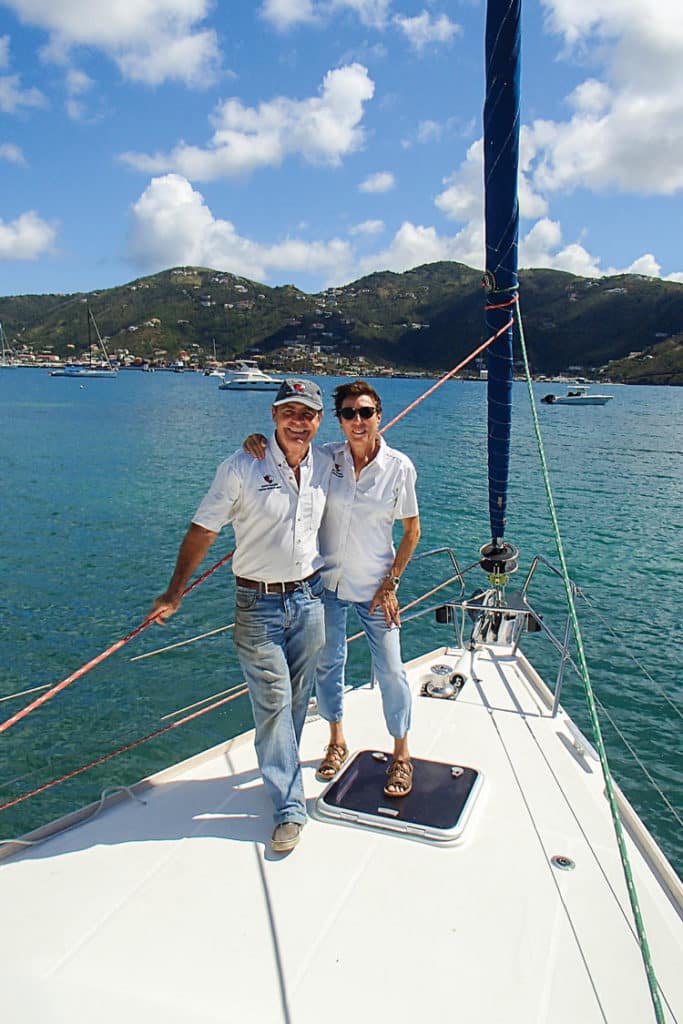
As Patti Gonsalves, of Cruise Abaco in the Bahamas, puts it, “We started the company with our own personal boat, grew to three, and just kept growing.”
For Brian Blank, of Newport, Rhode Island, this “labor of love” arose from a brush with America’s Cup fame. “I was working a summer job in 1977 at Bannister’s Wharf and became part of the dock crew for Ted Turner and Courageous,” Blank recalls. “Most fun I’ve ever had! I guess I just fell into the boating lifestyle and adventures. I ended up buying my first 38-foot sailboat for charter in 1985 and have never looked back!” His Bareboat Sailing Charters 15-member fleet floats on moorings in Brenton Cove, in Newport Harbor.
Know Your Niche, and Set Priorities
Serendipity didn’t play a major role in Kurt Jerman’s business plans when he opened the charter portion of West Coast Multihulls in 2011 in San Diego, but understanding the market did.
“There have always been plenty of schools and charter locations in the Southeastern United States, the Bahamas and the Caribbean,” he says. “The key for us has been to fill a void in the market here on the West Coast with catamaran instruction and charters.”
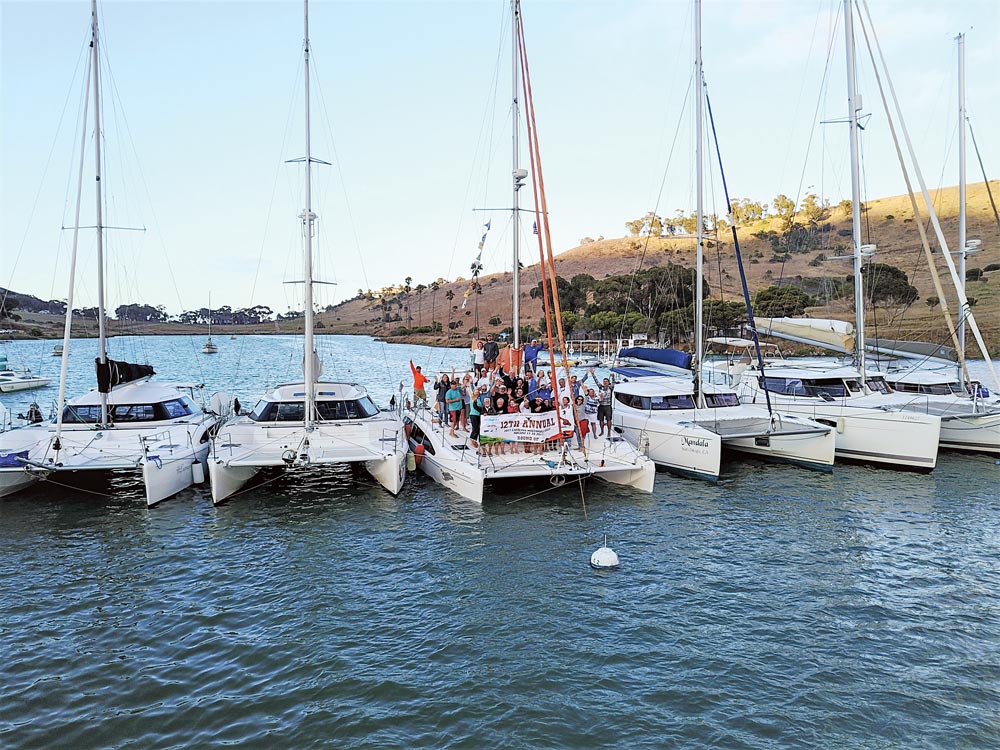
A few local sailing clubs dabbled in catamarans, Jerman says, “but none really knew that much about the boats, or the catamaran business as a whole. As a retail outlet for multiple catamaran manufacturers, my company had been importing cats to the West Coast since 1999.”
With an emphasis on teaching and certifying aspiring cat sailors, the business has gone from a two-boat, one-base center to a 10-boat, two-base concern, with a fleet of 10 privately owned cats from 35 to 58 feet in length. The new base, opened in high season 2018, is at Puerto Escondido, in the city of Loreto, Baja California Sur, Mexico, off the Sea of Cortez.
If charter is the “try before you buy” gateway to informed ownership, West Coast Multihulls has a fraternal East Coast twin. Over 25 years in existence, Maine Cat, of Bremen, Maine, has built 140 of its fast, light sail and power catamaran models in a range of lengths to an enthusiastic clientele. Its focus is on boatbuilding and direct sales to customers.
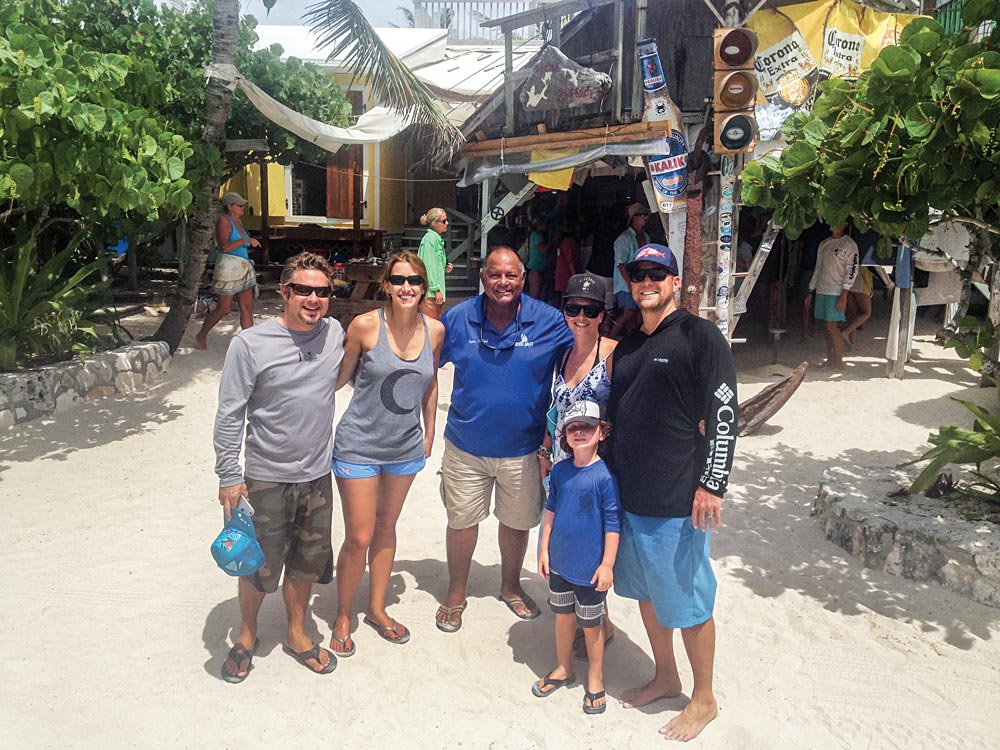
“When people say, ‘Let’s go charter a boat,’ Maine Cat is not the first company that comes to mind,” says owner Dick Vermeulen. “If you want to go sailing, we’re not the typical charter boat — our cats are performance cruisers.
“Our focus is not chartering. Having said that, our base in the Bahamas allows people to try one of our models and see if they like it.” The company’s base in Abaco, Bahamas, and its one-cat charter availability from Rockland, Maine, are live showrooms, and typically fully booked.
While charter is a valid means for sailors and aspiring sailors to transition to ownership, the critical stage of instruction can’t be overlooked, and that too has long been an ingredient of the recipe for success for West Coast Multihulls, Maine Cat and countless other charter outfits. Schools offer certification through custom curriculums or through organizations such as the American Sailing Association and US Sailing.
“We have been an ASA school since 1985 — one of the oldest still around,” says Barb Hansen, of Southwest Florida Yachts. “We see even more of a need for instruction now as the baby boomers get close to retirement. They now have the means to buy a boat, but might not have the skills.”
And Hansen, faced with countless aspiring owners, feels obligated to assess their needs. “When people come and ask me to help them find a boat to buy, I ask them what their experience is,” she says. “If they have none, I strongly suggest they go through our classes first. I tell them, ‘I would be happy to sell you a boat, but you would be buying a boat without the proper knowledge or experience.’ As with anything else, an informed buyer is going to be a better owner.”
Other companies, such as South Coast Sailing Adventures in Kemah, Texas, near Galveston Bay, remain dedicated and focused on instruction. “Our sailing school is the core of our business,” says owner Lucy Newman. “We strive to train competent and knowledgeable sailors, with a focus on safety and courtesy, while still having fun. We strongly believe that safe boating is achieved through education.”
With a view to longevity, Cindy Kalow, of Superior Charters in Bayfield, Wisconsin, adds, “Instruction is now paramount to our ability to maintain a fresh customer base and create future sailors. We would not still be in business if we didn’t have a training/certification arm to our business.”
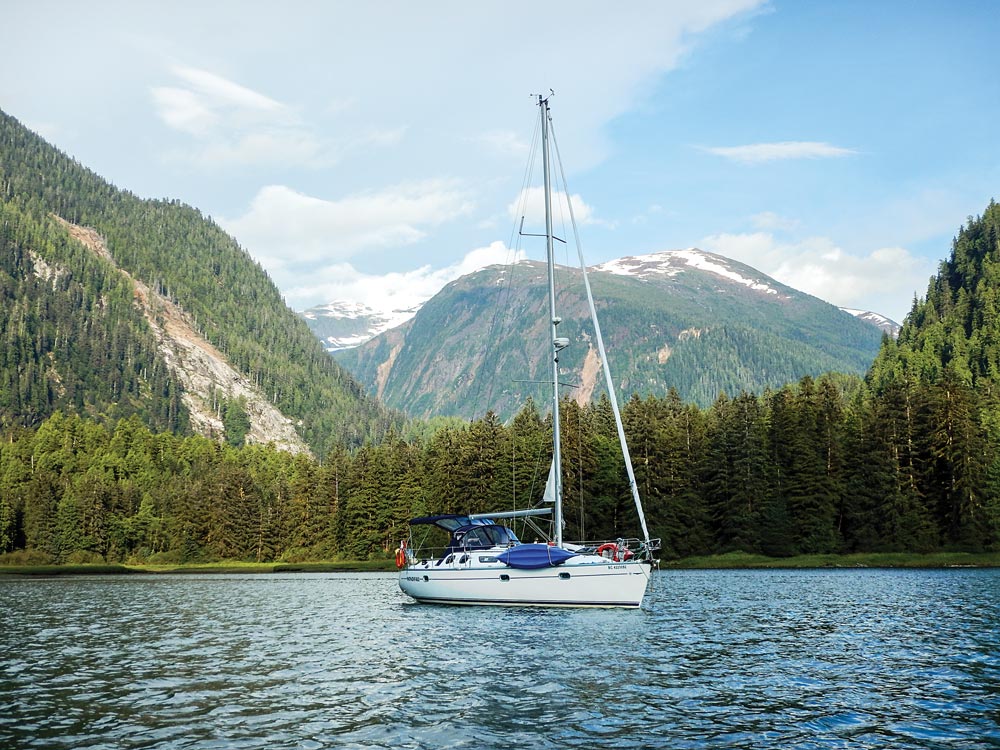
Challenges and Opportunities
Fleet maturity is a challenge that some smaller charter companies have had to deal with, and some have had an unprecedented hurricane season transform their business plan.
“The image of us having older boats is one we’ve been working hard to alter; our oldest boats are now 7 or 8 years old,” says Chestnut, of Conch Charters, of a fleet that grew to 56 a few years back. “Of course, hurricanes Irma and Maria in September 2017 affected that.”
As Conch rallied to get under way in time for charters in high season 2018 with a dozen boats, Chestnut says, “We never anticipated that we’d be at this juncture at this point. We want to continue to rebuild — it’s Conch Charters. It’s our baby. We don’t want to see it go poof! We’re coming back.”
Mother Nature isn’t the only force at play. “The market has changed,” says Kalow. “People no longer participate in just a few hobbies or activities. In the past, people would label themselves a sailor or a golfer. Our younger customer base is very active and has a lot of interests. We continually work to tap into new markets and customers who are looking for new and different experiences. You have to keep your product fresh, understand what you offer and stay sharp on how you present that offering.”
Then there’s the effort you put out.
“We have worked our tails off for nearly 35 years,” says Hansen. “I’m still here seven days (and nights) a week, with the occasional day off. If you don’t have that passion for your business, then you won’t succeed. You have to believe in what you do and then try to do the best job you can do.”
Rapid advances in digital technology have also had a major impact, and present new possibilities. “The sharing economy has opened up people’s eyes to unique lodging opportunities, and being based in San Diego makes it easy for us to offer Cruise-N-Snooze charter stays on the boat, like Airbnb on the water with a sunset cruise thrown in,” Jerman says. “That might have been hard to explain before, but now people just get it.”
Adds Chestnut, “People are more easily reached and found. Our reservation system is online. We put an e-tablet on each boat with the chart briefing and all charts and a nav system, as well as fun facts like plants and fish they might encounter. We have a checklist of each yacht’s systems. If charterers have a problem while they’re out, they can take a picture and send it to us via a text or email.”
It’s Magic — or Is It?
Company owners enjoy describing the ineffable twist to attracting repeat clientele.
“We retrieve lost luggage and deliver it, grab the bag of ice they forgot, pick up their trash on the water if they missed the drop-off in a settlement,” says Gonsalves, of Cruise Abaco. “When the owner of the company is the one who you see on the dock and on the water, you know you’re being taken care of. No request is impossible!”
“We make sure the client gets what he or she paid for — a fantastic time on the water,” Jerman says. “There’s a risk in making things overcomplicated.”
Resilience in the face of setbacks such as hurricanes also scores big with sailors. “At the end of the day, it’s all about attention to detail and giving people a little bit more than they expect — a beach bag, a bottle of rum,” says Chestnut. “One client has been chartering with us for 27 years for two weeks a year. They ask us if they can bring anything down. They’ve brought us starter motors for cars, maple syrup. That’s what makes our company nice. It’s like a family.”
It helps that, by and large, a charter trip is a happy experience. “Our customers are on vacation!” Hansen says. “It’s not like they are going in for a root canal. We love that we are often fulfilling a dream for someone or we are helping them plan the trip of a lifetime!”
It works at San Juan Sailing too. “Our staff derives sheer joy from helping people have joy — period,” Van Dyken says. “Nothing beats passionate, selfless service.”
Blank, of Bareboat Sailing, sticks to this philosophy: “Keep your customers happy, and they will always come back.”
Elaine Lembo is a CW editor at large.

